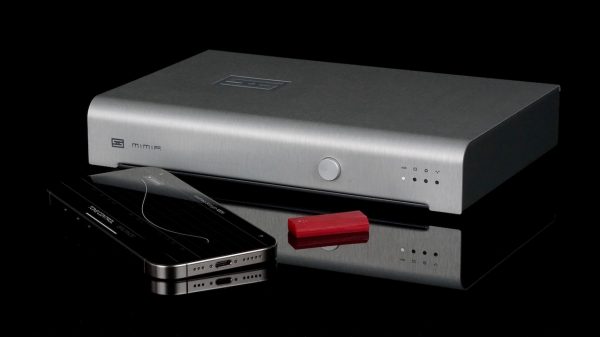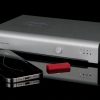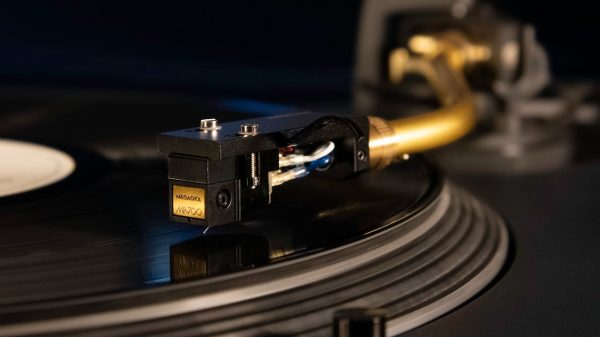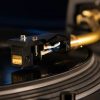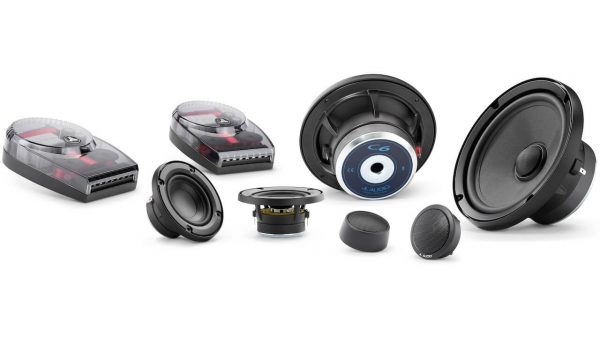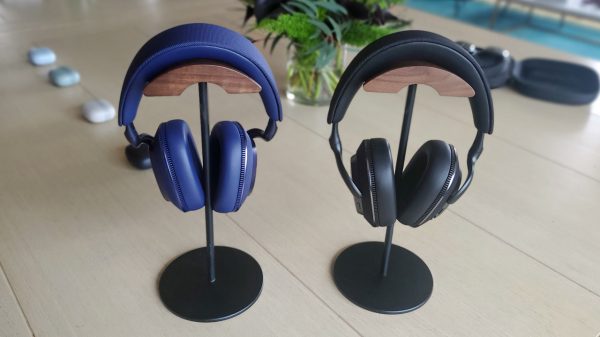Old Lyme, CT, September 2005 — What began in June 1945 in a former university laboratory with a team of only seven and a great deal of pioneering spirit has now become a global corporation with a workforce of more than 1,600. This year, Sennheiser is celebrating its sixtieth anniversary as a company. The audio specialist from Wedemark, Germany, just north of Hanover, has made a name for itself in the manufacture of high-quality microphones, RF wireless technology and headphones, with countless innovations in these fields forming the basis of the company’s outstanding reputation throughout the world. Today, in addition to the parent company Sennheiser electronic GmbH& Co. KG, the Sennheiser Group comprises of four German and 13 foreign subsidiaries, as well as the Denmark-based joint venture Sennheiser Communications A/S. Sennheiser electronic is still a family-owned company. Apart from the founder Prof. Dr. Fritz Sennheiser, who has now reached the grand age of 93, the limited partners include the Chairman of the Supervisory Board Prof. Dr. Jorg Sennheiser, Karin Sennheiser and the third Sennheiser generation.
Labor W
“When I think back to the early years, to the small workshop known as ‘Laboratorium Wennebostel’, which I founded with just a team of just seven…,”Fritz Sennheiser recalls “…and see what we have achieved in the decades since then — Sennheiser electronic — a company that has earned a worldwide reputation through the quality of its products — I think we have the right to be a little proud.” In the uncertain days after the war, Dr. Fritz Sennheiser and seven other employees of the Institute for Radio Frequency Engineering and Electroacoustics at Hanover Technical University were left with virtually nothing. They were prohibited from carrying out their field of research under the death penalty, and scientific work was out of the question. But, as deputy head of the institute, Fritz Sennheiser felt a strong sense of responsibility for his employees and decided to use his savings to found a small craft business, the ‘Laboratorium Wennebostel’ (in short: Labor W), named after the tiny village of Wennebostel, where the institute of Hanover Technical University was relocated after being bombed in 1943. The first products of the new company were made from stocks that the occupying forces had left behind for Labor W to use. Engineer Fritz Sennheiser and his colleagues designed millivolt meters, which they sold to the technical office of Siemens in Hanover. Siemens immediately placed follow-up orders, and the communication engineers soon found themselves becoming manufacturers of increasingly complicated measuring devices.
The first microphone
“Then we had a real stoke of luck,” Fritz Sennheiser recalls. “Siemens called us and asked if we could possibly make microphones for them, as their supplier, the Henry Company in Austria, was no longer available.” Fritz Sennheiser was quick to seize the opportunity with both hands. The engineers at Labor W were more than happy to make the microphone for Siemens, but Fritz Sennheiser and his team went on to study the theory of microphone technology in minute detail — with the result that, in 1947, the company finally presented its very first microphone, the M2.
In the following years, the fledgling company continuously expanded its portfolio. In addition to measuring instruments and microphones, the product range also included amplifiers, staff locator systems, duplex intercom systems, geophones, microphone transformers and magnetic head-phone capsules. This period also saw the development of the MD 21 (1953), a microphone legend that is still manufactured today, and the ground-breaking MD 82 ‘tele-microphone’ (1956). The MD 82 was the first microphone that was able to pick up sound at great distances; the shotgun microphone was based on a laboratory model developed as early as in 1949. In 1957, Labor W presented its first RF wireless microphone, opening up a field in which the company was to excel in the future.
Sennheiser electronic
In 1958, Labor W was renamed Sennheiser electronic, as the company had long since ceased being just a small laboratory. At this point 450 people now worked at Sennheiser, and 90 percent of the products were supplied to industrial customers. For example, almost all of the well-known manufacturers of tape recorders used Sennheiser microphones. Prof. Dr. Fritz Sennheiser, who in addition to teaching at Hanover Technical University, had changed from being an engineer to being a businessman, successfully consolidated the company’s business activities under its own brand name in the 1960s. Exports were also stepped up. As success grew, so did the company. The factory buildings in Wennebostel were continuously expanded, and production sites were leased in Soltau and Burgdorf. 1960 saw the launch of another classic microphone, the MD 421. In 1961, Sennheiser developed its first radio frequency condenser microphones, extremely high-quality, low-noise microphones that allow broadband recordings to be made even under the most difficult climatic conditions.
The world’s first open headphones
But it was in 1968 that a somewhat ‘accidental’ invention led to a product that was to outdo even the highly successful microphones. Sennheiser developed the legendary HD 414, the world’s first open headphones — a product that created the headphone market all by itself. The Sennheiser headphones were so successful that, just ten years later, they already accounted for more than 50 percent of the company’s total sales. 1968 also saw the launch of the MK 12, the first professional condenser clip-on microphone, just one of many innovations with which Sennheiser pioneered the future of wireless transmission. In 1973, Fritz Sennheiser transformed the company into a limited partnership (KG), paving the way for his son Jorg, who was just as fascinated by engineering and technology as his father, to enter the company. Dr. Jorg Sennheiser became Technical Director in 1976. And the company continued to grow. In 1977, Sennheiser bought a production site in Burgdorf, Germany, allowing it to bring together the manufacturing activities of the three rented buildings and the numerous home workers into a central location. In 1975, Sennheiser presented its first cordless headphones, which used infrared technology due to the restrictions on radio frequencies at the time. 1977 saw the introduction of the world’s first electret headphones, the unipolar 2000. This was followed in the field of radio transmission by the first multi-channel rack receiver, the EM 1026 (1978). In 1982, an absolute wireless classic was presented, the SKM 4031 — TV handheld transmitter, which was to lay the foundation for the success of Sennheiser RF wireless systems in the following years. Smaller and smaller pocket transmitters and clip-on microphones such as the MKE 2 became the preferred choice on the world’s stages, helping to forge the huge success of musicals in the ’80s and 90s.
The second generation takes over
In 1982, Fritz Sennheiser handed over the management of the company to his son, who in the meantime had also taken over his father’s role at the university. “Looking back, I can genuinely say that it was a very smooth transition,” said Jorg Sennheiser. “My father kept to the agreement and withdrew from the everyday business of running the company, as far as that is possible for a former patriarch. I have the greatest admiration for the way in which he managed this transition.”
As before, Sennheiser continued to invest huge sums in research and development as well as in manufacturing technologies. Sennheiser was the first medium-sized European company to make use of modern SMD technology and, in 1984 the entire production process was adapted to processing the miniature components involved. In 1985, manufacturing capacity was doubled by the addition of a new factory building in Burgdorf, and the site in Wennebostel was also expanded by adding a dispatch building and a high-shelf warehouse. Five years later, in 1990, Sennheiser opened a third production facility in Ireland. The site in Tullamore became the company’s center for headphone manufacturing — the first major step in making the company fit for the global market and its inevitable price wars. The 1980s saw the development of revolutionary product innovations in the field of RF wireless technology and in a sector that was completely new for Sennheiser: aviation. Sennheiser developed pilot headsets for Lufthansa, followed in 1987 by the NoiseGard active noise compensation system, which effectively cancels out most of the loud wind and engine noise in the cockpit. In the field of RF technology, PLL synthesizer technology was introduced in 1988, allowing wireless systems to transmit even more precisely and making them even more agile in changing frequencies. This meant that applications with a very large number of wireless microphones suddenly became possible without difficulties. At the end of the 1980s, Sennheiser also became active in the sales sector with the foundation of its first sales subsidiary. As Jorg Sennheiser pointed out: “That was certainly my most important decision, not only to make products but also to be responsible for selling them. And it was so successful that, for a while, we were virtually setting up one subsidiary after another.” In 1991, Sennheiser took over the ailing company Georg Neumann GmbH, Berlin, and rescued the microphone sector of the studio specialist.
Sennheiser electronic GmbH & Co. KG
In 1996, Sennheiser was transformed into a private limited company (GmbH &Co. KG). Jorg Sennheiser handed over the everyday running of the company to an executive team, while he himself became chairman of the newly established supervisory board, looking after the company’s strategic orientation. The launch of the evolution microphone series in 1998 marked the company’s highly successful return to the MI business. The following year saw the introduction of the evolution wireless series, with the result that sales revenue from wireless microphones, which in the meantime made up the largest share of the company’s total sales, increased even further. Other product highlights of the 1990s included the ‘Orpheus’ electrostatic headphones with a tube amplifier (1991), which the press praised as “the best headphones in the world”, and the first headphones with digital infrared transmission, the IS 850 (1993).
1993 also saw the launch of the classic SKM 5000 wireless microphone, followed in 1995 by Sennheiser’s first RF wireless headphones and the world’s first RF wireless stethoset headphones in 1998.
In April 2000, the fourth Sennheiser plant was opened in Albuquerque, NM. Jorg Sennheiser stated, “In order to protect ourselves against currency fluctuations, we decided to pursue a strategy that might be described as ‘natural hedging’. This means that we compensate for fluctuations by attempting to have the same expenditure in dollars as we have income in dollars.” In June of the same year, a state-of-the-art microphone production facility was opened at the Wennebostel site. On January 1, 2003, Sennheiser once again entered unchartered territory in the firm’s history by founding Sennheiser Communications A/S, the company’s first joint venture. In March2005, it was the turn of loudspeaker experts Klein + Hummel to join the Sennheiser Group. The most recent market successes of the audio specialists include the MKH 800 (2000), the first studio condenser microphone to fully utilize the wider frequency range of the new digital audio formats with only one transducer, and the innovative visitor information system GuidePORT (2001),as well as the world’s smallest professional bodypack transmitter, the SK 5012,(2001), the Sennheiser/Neumann SKM 5000 N/KK 105 S RF wireless microphone (2002) and the first digital studio microphone according to the AES 42 standard from Neumann (2003).
Award-winning technology
Innovations have made Sennheiser famous throughout the world — and this has been underlined by an impressive array of awards. Apart from the Scientific and Engineering Award of the Academy of Motion Picture Arts and Sciences for the MKH 816 shotgun microphone, Sennheiser has also been honored with the highest award of the American Academy of Television Arts and Sciences, the Emmy, for its wireless RF transmission technology. A Grammy for Georg Neumann GmbH, two German Industry Innovation Awards for the optical microphone and the AudioBeam directional loudspeaker and numerous personal awards for the company’s founder, such as the Gold Medal of the Audio Engineering Society or more recently the Diesel Medal, are clear evidence of the company’s innovative power. Rolf Meyer, Speaker of the Executive Committee, is certain that this will remain so in the future: “With his philosophy of always giving his engineers space to carry out research and make discoveries, Prof. Dr. Fritz Sennheiser has made a decisive mark on the company. We can therefore look forward to even more pioneering developments from Sennheiser.” As one of the world’s leading manufacturers of microphones, headphones and wireless transmission systems, the Sennheiser Group with its headquarters in Wedemark, Germany, had total sales of about €262 million in 2004. The export share is 83%. Sennheiser has a total workforce of more than 1,600 employees, of whom about 60% are employed in Germany. Sennheiser is active worldwide and, in addition to other partnerships, has its own sales subsidiaries in France, the UK, Belgium, the Netherlands, China, Singapore, Canada, Mexico and the largest in the USA.
For further information about Sennheiser please visit us www.sennheiserusa.com or contact:
John Nicoll, Sue Toscano or Erika Pearson
Nicoll Public Relations, Inc.
Phone: 781-762-9300
E-Mail: john, sue or Erika@nicollpr.com


